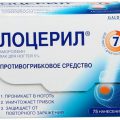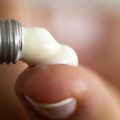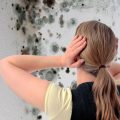- What is mold?
- What makes mold grow?
- Should I be worried about mold in my home or apartment??
- What health problems can mold cause??
- How can I determine, is there mold in my house, or should i check my house for mold?
- How can I be exposed to mold?
- How much mold does it take, to get sick?
- Some types of mold are more dangerous, than others?
- What is Stachybotrys chartarum?
- How Stachybotrys May Affect My Health?
- How can I find out, is Stachybotrys chartarum present in my apartment?
- How to prevent mold growth?
- How to clean mold?
- Should I use bleach or other biocides (disinfectants, disinfectants or fungicides) to kill mold?
- Should you use an ozone generator to solve your existing mold problem?
- Who should clean up the mold?
To answer our readers some of the most common questions and concerns about indoor mold., its impact on human health and how to prevent or remove it, we provide you with this information.
Let's admit, you are the owner apartments in the center of St. Petersburg or bought it recently (especially after renovation), a city with high humidity and water channels contributes to more active mold on the walls, floors and ceilings of apartments near water. After a while, you may notice the formation of mold., important to know and understand, what to do with it and how dangerous it is, is it possible to withdraw it and how difficult it can be. Understanding all the most popular mold questions.
What is mold?
Mold Is a type of mushroom. They grow in their natural environment. Tiny particles of mold are found everywhere in the air, just like indoors., so on the street. In nature, mold helps break down dead materials., it can be found growing on soil, food, plants and other items. Mold is also very common in buildings and homes.. Mold needs moisture to grow. Indoors, mold growth can occur when humidity levels are high., for example in basements and showers. Mold produces microscopic cells, called "disputes", which spread easily through the air. Spores can also be spread through water and insects. Living spores act like seeds, forming new colonies of mold, when suitable conditions are found.
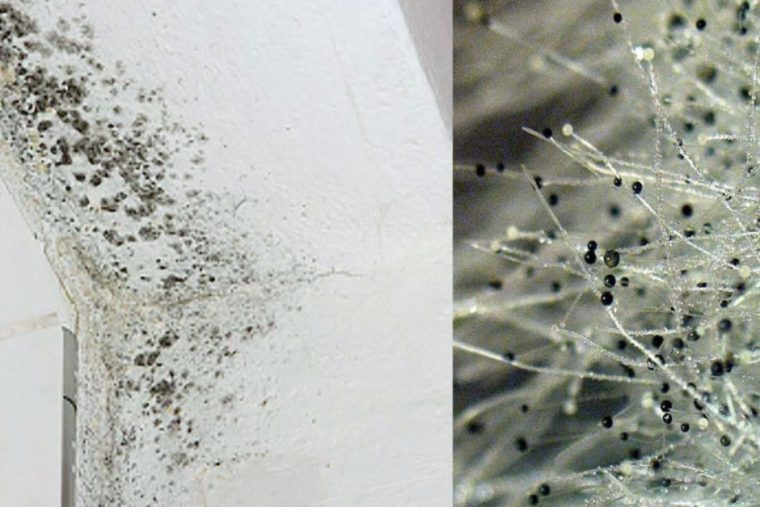
What makes mold grow?
Only a few things are needed for mold to grow and reproduce.:
- Nutrients (food);
- Suitable place for growing;
- Moisture.
Many building materials (eg, tree, drywall, etc.. d.) give food, mold-promoting. Even dust, settled on these materials or furniture, can be a food source for mold. Mold can grow almost anywhere, where there is enough moisture or high humidity. Controlling humidity is the key to stopping indoor mold growth, because any mold requires water to grow. Moisture can come from:
- Flooding from outside (storm water, flooded lakes, brooks, storm surges, etc.. d.);
- Flooding from the premises (overflow from sinks, baths, toilets, drain trays of air conditioners or sewer systems);
- Condensation (caused by too high humidity in the room or too cold surfaces);
- Water leaks outside the building (roof, walls, floors);
- Water supply leaks or broken water pipes;
- Outdoor Sprinklers, striking walls, or sprinkler systems for fire extinguishing;
- Poor moisture removal from the kitchen and bathroom (steam from showering or cooking);
- Using a humidifier;
- Drying wet clothes indoors or no ventilation of clothes dryers outdoors (including electric dryers);
- Houseplants (watering, etc.);
- Moisture from our body (sweat, wet hair on pillows, breath);
- Warm humid air from outside;
- Liquid spills.
Should I be worried about mold in my home or apartment??
Yes and no. One side, there will always be mold in your home in the form of spores and pieces of mold cells. Mold in the air is normal. On the other hand, mold must not be allowed to grow and multiply indoors. When it happens, your exposure level may increase, thereby increasing the risk of potential health problems. Building materials may also be damaged, household items and furniture. Mold needs nutrition, to survive, and she will be perfectly happy to eat your house, if you let her.
What health problems can mold cause??
There are four types of health problems, caused by mold: allergic diseases, annoying effects, infections and toxic effects. people, mold sensitive, such symptoms may occur, as irritation or congestion of the sinuses, dry hacking cough, wheezing, skin rash or burning, watery eyes or redness of the eyes. People with severe mold allergies may have more serious reactions, such as symptoms of hay fever or shortness of breath. People with chronic medical conditions or people with immune system problems may be more likely to contract certain molds, viruses and bacteria. Mold can also cause asthma attacks in humans, asthma sufferers.
Mold complaints sometimes report headaches, memory problems, mood swings, bleeding from the nose and body pain, but the causes of these physical symptoms have not yet been clarified. The toxicity of some molds is not well understood and is currently a controversial topic in the medical and scientific community.. There is evidence of specific long-term toxic effects from food consumption, mold toxins.
Allergic diseases are currently considered the most likely health problem., mold-related. Research into the potential health effects of mold continues today. Very little is known about the actual health risks from inhalation or skin contact with mold toxins.
How can I determine, is there mold in my house, or should i check my house for mold?
Indoor mold growth can usually be seen or smelled. In most cases, if there is visible mold growth, no sampling required. There are no standards, health-based or exposure-based, which could be used to evaluate the result of mold sampling. We do not recommend testing or sampling mold, to learn, do you have a mold problem or what kind of mold can grow. Sampling for mold in the air can be costly and, if it is held, should only be performed by experienced professionals. Explore the problem of mold; don't test.
- Pay attention to visible mold growth (it may look cotton, velvety, rough or leathery and have different colors, such as white, grey, brown, the black, yellow or green). Mold often shows up as stains or fuzzy build-ups on furniture or building materials (walls, ceilings or any objects made of wood or paper). Look for signs of moisture or water exposure (leaks, standing water, water stains, condensate, etc.. d.).
- Check around the air handling units (conditioners, ovens) standing water. Check the evaporator coils regularly, liner surfaces, drain trays and drain lines.
- Look for places, where did you notice the smell of mold. If you smell an earthy or musty smell, possibly, you have a mold problem.
- If people have, mold allergy sufferers, you have some of the symptoms listed above in your home, possibly, you have a mold problem.
How can I be exposed to mold?
Mold is almost everywhere, floats in the air and on all surfaces. People are exposed to mold 24 hours a day, seven days a week and 365 days a year. The impact is increasing, when moldy indoor materials dry out, damaged or disrupted, causing spores and other mold cells to be released into the air and then inhaled. Increased exposure can also occur, if people directly touch moldy materials or accidentally eat mold.
How much mold does it take, to get sick?
It depends on the situation and the person. This question is difficult to answer the same way, how hard to say, how much sun causes sunburn: the amount differs from person to person. the, what one person can endure with little or no effect, may cause symptoms in another person.
Long-term presence of mold in a room can ultimately become unhealthy.. the, who have special health problems, you should consult your doctor, if they feel, what household mold affects their health. The following types of people may be affected earlier and more severely, than others:
- Babies and children;
- Elderly people;
- Persons with chronic respiratory diseases, allergies or asthma;
- Individuals with a weakened immune system (eg, people with HIV or AIDS, Patients, undergoing chemotherapy, or organ transplant recipients).
Some types of mold are more dangerous, than others?
Certain types of mold can produce chemicals, called "mycotoxins". These forms are common, and they are sometimes called "toxic mold". There are very few reports that, that toxic mold inside homes can cause unique or rare diseases. If you think, that you have a mold problem at home, you don't need to find out, what type of mold can you have. All molds should be treated equally, when it comes to health risks and disposal. All mold growth in the room should be removed immediately., regardless of, what type of mold is present, and can it produce mycotoxins.
What is Stachybotrys chartarum?
Stachybotrys chartarum (also known as Stachybotrys atra) Is a greenish black mold, which can grow on such materials, as drywall or drywall, ceiling tiles and wood, when they become wet or damaged by water. Not all greenish black molds are Stachybotrys chartarum . Some strains of Stachybotrys chartarum can produce mycotoxins. Does mold produce mycotoxins, It depends on, what does it grow on, and such conditions, like temperature, pH, humidity and other factors. When mycotoxins are present, they meet as if they were alive, and in dead mold and may be present in materials, moldy. While Stahibotris grows, a moist layer of mucus covers its spores, preventing them from getting into the air. When the mold dies and dries up, air currents or physical handling may cause spores to enter the air.
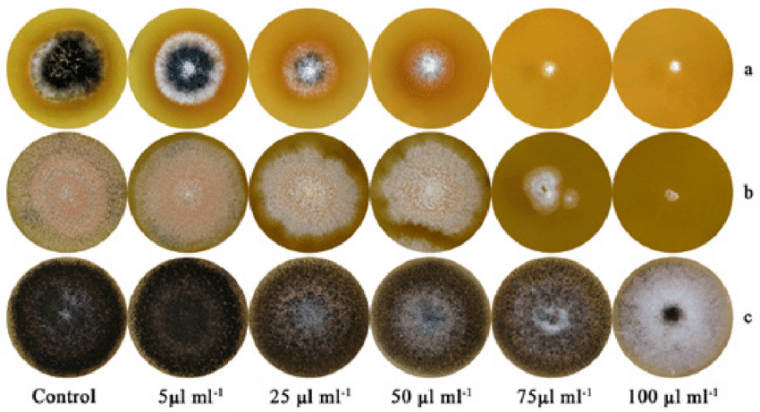
There is currently no test, allowing to define, Does the growth of Stachybotrys in buildings produce toxins. There is also no blood or urine test., which could define, whether the person has been exposed to Stachybotrys chartarum spores or its toxins.
How Stachybotrys May Affect My Health?
Typically, indoor air levels of Stachybotrys are low.. As with other types of mold, at higher levels, adverse health effects may occur. These include cold symptoms, rash, sinus inflammation, eye irritation and exacerbation of asthma. Some symptoms are more general, eg, inability to concentrate or fatigue. Symptoms usually go away after removing the mold..
How can I find out, is Stachybotrys chartarum present in my apartment?
Many molds are black, but not Stachybotrys. for example, black mold, common between bathroom tiles, - this is not Stachybotrys. Stachybotrys can only be identified by specially trained professionals using microscopic examination or culture. We do not recommend taking mold samples at home. All mold in the room should be removed immediately., regardless of their type.
How to prevent mold growth?
Water is the key to solving mold problems in an apartment or house.. Mold growth cannot start without it., not to mention its reproduction and distribution. The easiest way to prevent mold from taking hold is to control dampness.. Keep your home clean and dry. When the water is even 24 o'clock, common forms can take root. Keeping humidity levels below 60% and removing moisture from showers and cooking outside are several ways to prevent conditions, which can lead to mold growth. Other ways include:
- Clean up and dry spilled liquid for 24 hours;
- Drying damp building materials and carpets for 24 hours;
- Use an air conditioner or dehumidifier, to lower the humidity level in the room below 60%. If you have a central air conditioning system and need a dehumidifier to lower the relative humidity below 60%, you should check the air conditioning system for problems;
- Not rug in bathrooms or basements;
- Note. Although most experts suggest less than 60%, less 50% best for fighting mold and dust mite growth. Dust mites are microscopic animals, spider-related, ticks and other ticks. Dust mites eat mold and dead scales (flakes) human or animal skin and leave allergenic proteins. Dust mites reduce allergen production at lower humidity levels.
How to clean mold?
Mold should be removed, as soon as she appears. person, mold cleaning, must be free of symptoms and allergies. Small areas of mold should be cleaned with detergent / soapy water or common mold or mildew cleaner. Gloves and goggles should be worn when cleaning. Then the cleaned area should be thoroughly dried. Throw away sponges and rags at once, used to clean mold. If mold comes back or spreads quickly, it could mean, that you have the main problem, eg, water leak. When troubleshooting mold problems, you must first repair any water leaks..
If there is strong mold growth, contact specialized companies, who are engaged in the elimination of mold in any premises, houses, apartments, in schools and commercial buildings. If the material is moldy, such as drywall, carpet and insulation, not easy to clean, it may need to be removed and replaced.
Should I use bleach or other biocides (disinfectants, disinfectants or fungicides) to kill mold?
Using bleach or other chemicals to kill indoor mold growth is not required in most cases. The goal should be to remove mold by cleaning or removing moldy materials. Dead mold can still pose a health hazard, if you were exposed. Using bleach or other disinfectants on surfaces after removing mold may be required there, where people are considered susceptible to fungal infections (eg, people with immune system problems). If you decide to use bleach or another chemical, read and follow carefully label directions and hazard statements (caution, a warning, danger). Do not mix bleach with ammonia cleaners or acids, as hazardous chlorine gas can be formed.
Should you use an ozone generator to solve your existing mold problem?
Not. Ozone irritates the lungs and is unlikely to help solve indoor mold problems.. No one should specifically expose themselves or others to ozone.. Eliminate the cause of mold (usually it is moisture), and then remove the mold, cleaning surfaces or removing moldy materials.
Who should clean up the mold?
Who should be cleaning, depends on many factors. One consideration is the size of the mold problem. If the moldy area is less than 1 square meter, in most cases you can handle the job yourself. Anyway:
- If you decide to hire a contractor (or another professional service provider) for the cleaning, make, that the contractor has experience in cleaning mold.
- If you think, that the heating or air conditioning system may be contaminated with mold, also inform the specialists about it.
- If you have concerns about your health before starting cleaning, consult a doctor.
- Note: “Do not start the air conditioning system, if you know or suspect, that it is infected with mold - it can spread mold throughout the building. ". Unfortunately, considered, that the majority, if not all, heating and air conditioning systems will support mold growth at some point. Stopping the use of the air conditioning system due to suspected mold growth would make most buildings very uncomfortable in hot and humid weather.. Should the air conditioner be turned off, if mold is found in the system? Ideally yes. Turn off the system while cleaning or removing mold.. If water damage and / or mold was caused by sewage or other contaminated water, call a specialist, experienced in cleaning and renovating buildings, damaged by contaminated water.






